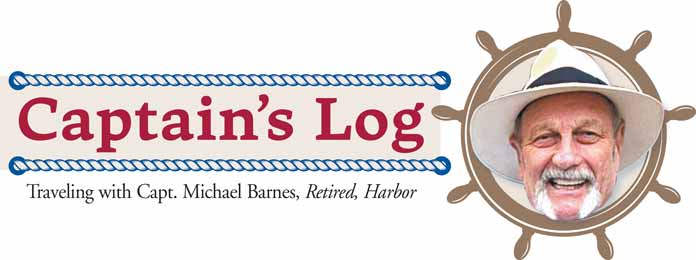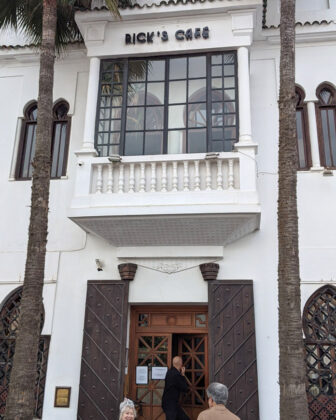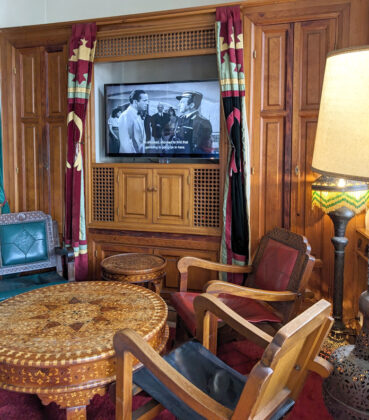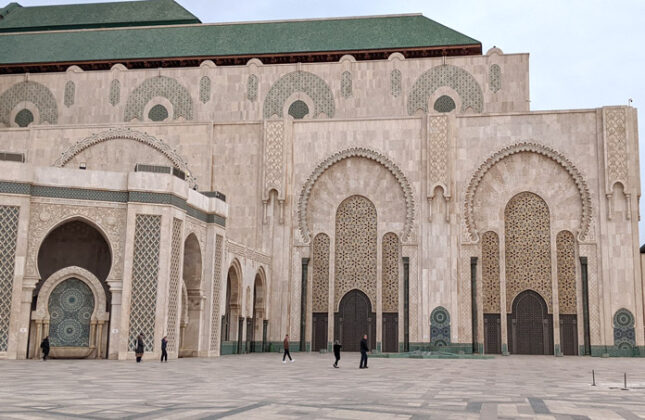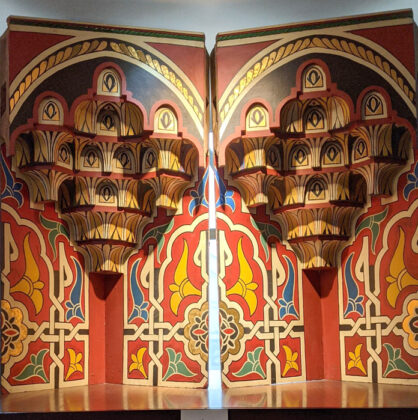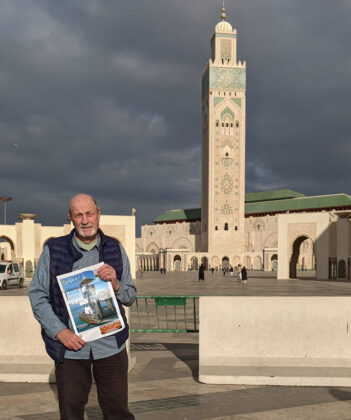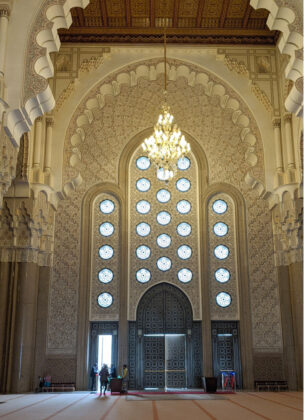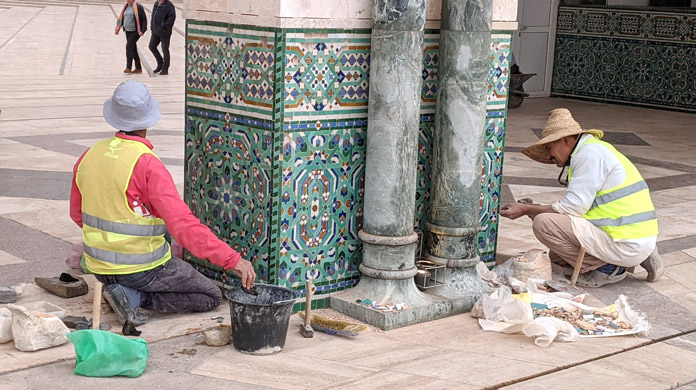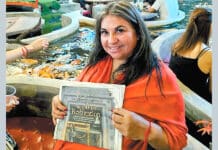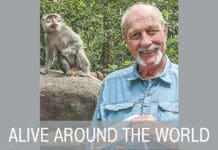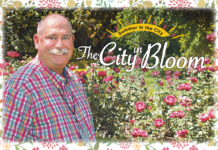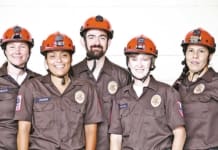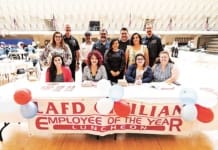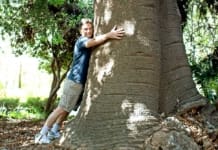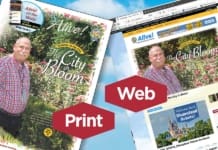 Send in your ALIVE! AROUND THE WORLD
Send in your ALIVE! AROUND THE WORLD
Take Alive! with you wherever you go! Bring your recent copy of Alive! with you when you travel and snap a high resolution photo of you holding Alive!
Send in your pictures and descriptive text using the online form, and we’ll publish it.
SUBMIT YOUR ALIVE! AROUND THE WORLD
Cruise Ships, Movie Stars and Mosques
— A Letter From Morocco, Pt. 3
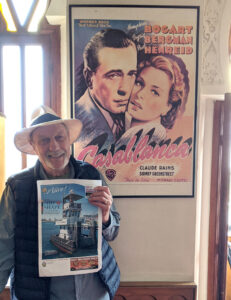
Wishing to see more of Morocco than just Marrakech, we hired a chauffeur to drive us three hours north early in the morning to the port of Casablanca. Our alternative option would have been to catch the Al Atlas high-speed train from Marrakech to the port of Casablanca. However, this also takes three hours and still entails hiring a driver to explore the port upon arrival.
Casablanca is very popular with European cruise ships as it is one of the largest artificial ports in the world and the eighth largest in the Arab world. Massive skyscrapers and office blocks surround it, and lots of colorful horn-honking trucks intermingle with overloaded donkey carts and motorcycles, a positive hive of activity but lacking the charm of other cities like Tangier, Marrakech and Chefchaouen.
Humphrey Bogart did not know what he was creating when he filmed Casablanca in a Hollywood film studio and not in the port in Morocco. Due to the worldwide popularity of the film, visiting tourists are constantly asking where Rick’s cafe from the 1942 film was. Taking advantage of these requests, a former American diplomat to Morocco, Kathy Kriger, recreated Rick’s Café in 2004. She converted a traditional Moroccan grand mansion with an open central courtyard into a bar similar to the one portrayed in the film. An authentic 1930s Pleyel piano was installed so the in-house pianist can play “As Time Goes By.” Over and over.
When we visited Rick’s Cafe, it had become a high-end restaurant with a very friendly but firm doorman to enforce the dress code. We witnessed budget cruise ship passengers in very casual sportswear with backpacks being turned away. The restaurant has become very avant-garde, with prices to match; after a few cocktails, it was time to leave and step back into the real world.
Our next destination was the Hassan II Mosque by the sea, with its 600-foot-tall green-tiled beveled minaret tower visible from nearly anywhere in the city just a short drive away. These beautiful grounds are indeed a sight to behold; a verse from the Koran says, “The throne of God was erected on the waters,” so King Hassan II employed French architect Michel Pinseau to design an artificial peninsula jutting out into the bay. After eight years of construction, $600 million in expenditures and 80 million man-hours, it was completed and inaugurated on the prophet Muhammad’s birthday in 1993. The mosque is the second largest in the Islamic world, after the one in Mecca, and is the only active mosque open to non-Muslims in Morocco. But you must dress respectfully, with no beachwear; only closed-toed shoes; long trousers; with arms and shoulders covered. Women don’t have to cover their heads. To enforce this at the entrance, there is a security check. The ticket office, 120 dirhams (about $12), allows access to the National Museum and Mosque grounds. Walking from the main entrance towards the mosque, we were overcome by the beauty and graceful enormity of the grounds and this architectural marvel.
Upon entering the mosque, we had to remove our shoes and were given a small green bag to put them into so we could carry them. For those who do not wear socks, plastic bags are provided to cover the feet. They are uncomfortable to walk in but better than bare feet on a carpeted floor traveled by millions! There are tours in three languages: English, French and Spanish, and our guide explained all about the impressive architecture of the prayer room with its 78 pillars supporting a cedar ceiling with an opening system so that, in summer, 20,000 worshippers can look up and see the heavens. There are still separate prayer areas for women.
In the past, before electricity, these large Muslim Towers did not have stairs inside but a ramp system so that older Imam could ride a small donkey up and down five times a day to call the faithful to prayer. One can only speculate who cleaned up the donkeys’ daily surprises! There are no donkeys here; this minaret has a fast elevator that gets you to the top in one minute flat, with a laser beam directed toward Mecca. The building is earthquake resistant and has electric doors, and the floor has radiant heating; below is a vast car park and 41 marble fountains, used on special occasions by the faithful for ablutions before prayer.
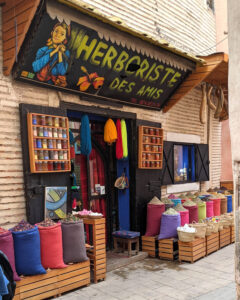
Upon leaving the mosque, our chauffeur took us to a local eatery, then drove us to see the Old Medina souk; it’s like traveling back in time, perfect for cruise ship passengers looking for unusual Moroccan food and spices, weird antiques, wooden statues, hand-made black soap, and other suspect vintage memorabilia. But I suggest keeping your wallet in your front pocket and avoiding wearing any expensive-looking jewelry.
The nice thing about having a chauffeur, after a long day of sightseeing, good food and ice-cold adult beverages, is that we could all nap on the road back to Marrakech.
Tip: Before visiting Morocco, I suggest learning a few Moroccan Arabic or French words. Most shop owners and taxi drivers speak only these two languages. A small start is “Shukran” (or in French, merci) — thank you.
Bon voyage mes amis.
– The Captain


